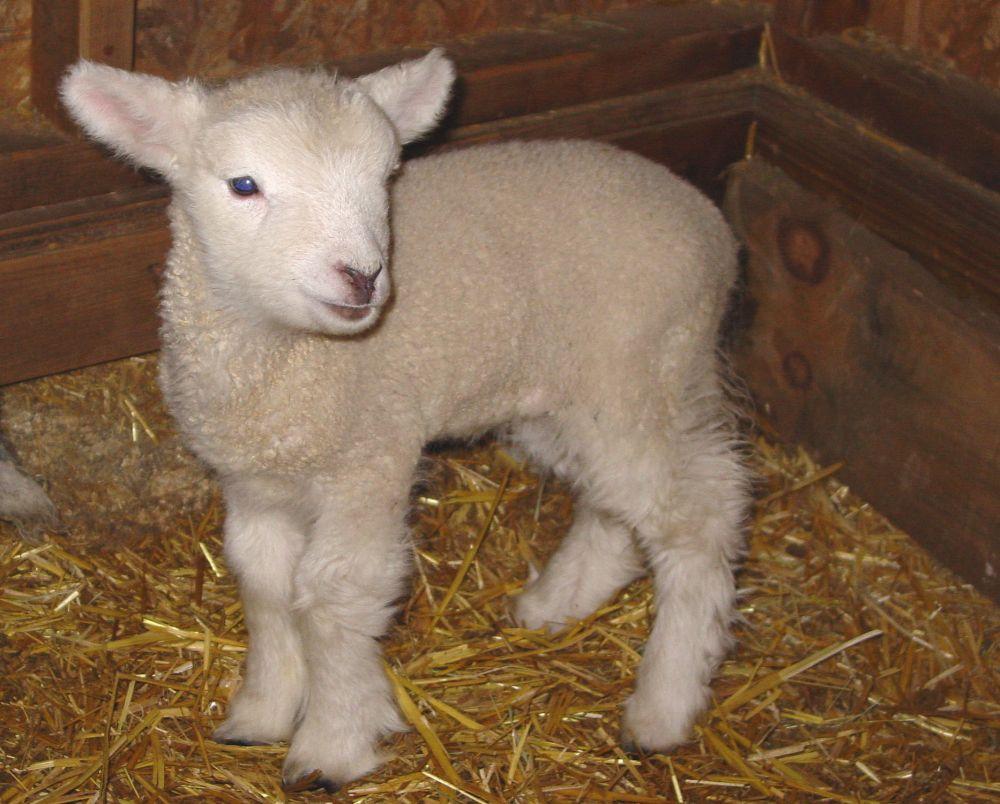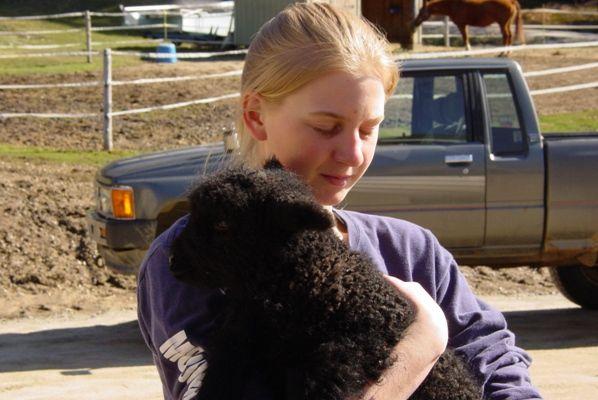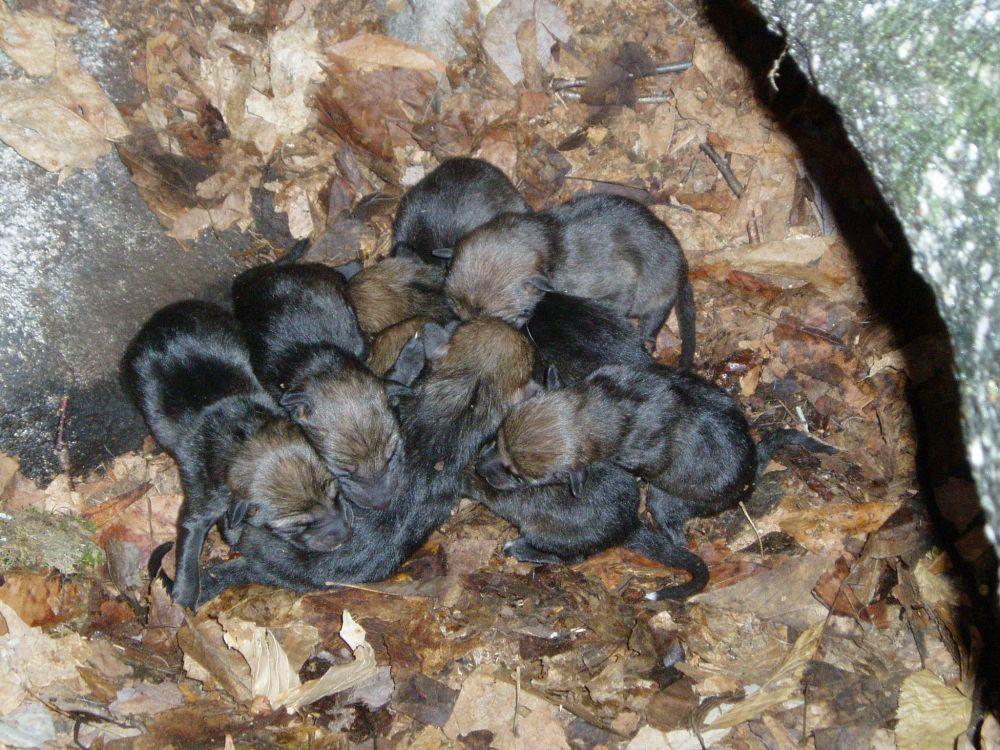Lessons on a small farm where a death one spring brought new life to the forest
- Tags:
- Wildlife

Late winter lambing season is often fraught with peril. Photo Geoff Jones
We lost two newborn lambs that night. The earliest lambs born on our farm that spring were suddenly dead—the first time we’d ever lost sheep. The veterinarian said we’d just been lucky so far. Three lambing seasons without a bad experience? We were overdue for heartache.
While the local coyotes we’d seen all winter were directly responsible for the dead lambs, it was mostly our own fault. We had attended an evening spring concert at the kids’ school and didn’t get home until nearly nine. We skipped the customary pre-bedtime lambing season barn check—a big mistake.
Inside the barn, a day-old lamb had been nursing well from her experienced mother, Cocoa. We hadn’t officially named the adorable little black ewe lamb yet, but Bean was a first choice.
At daybreak, I found another ewe, Clover, had unexpectedly given birth outside the closed maternity barn overnight. “Calamity Clover” had been our first-born lamb two years earlier. She was a near-frozen “lambsicle” when I first found her lying in the straw one winter morning. Lambing season is like that—you never know what to expect or when it will happen.
Now Clover trailed telltale remnants of afterbirth from her hindquarters, but no lamb could be found. I guessed the missing newborn had been snatched by the coyotes that patrol the perimeter of the farm. High snow banks had recently created an easy way over the woven wire fences; it was a small miracle Clover herself wasn’t killed. She was able to flee with the rest of the Flock when a bold coyote vaulted a fence to grab her newborn. We never saw Clover’s firstborn lamb.
Meanwhile, secure inside the barn, nursing Cocoa was spooked by the coyote commotion outside. Isolated from the rest of the panicked flock, she inadvertently trampled baby Bean, who I found lying awkwardly in the straw, unable to stand and nearly too weak to bleat.

“Help—something’s wrong! The little lamb is dying!” I yelled to my kids as they were leaving the house wearing clean school clothes. My oldest daughter Emily took the weak, chilly lamb inside the house to warm her while my wife Karla and I tried in vain to milk Cocoa. Her udder was full, but we couldn’t get a drop from her. Then we tried milking Clover, still trailing wet afterbirth. Just when the warm foremilk— yellow Colostrum rich in antibodies—began to drip from Clover, Bean died in Emily’s arms.
Emily stepped out onto the front porch holding the dead lamb, legs and neck dangling from its lifeless body. I will never forget Emily’s mournful, wailing sob echoing across the pasture. In rage and grief, my daughter—a vegetarian— swore vengeance on all coyotes. She vowed to shoot them all herself.
After losing the lambs, our veterinarian prescribed penicillin shots for both ewes. We couldn’t feed them grain for the next month, only a meager ration of hay to avoid mastitis. We waited for udders to dry up while we watched for infection. Those were our responsibilities to nurse the postpartum ewes back to health.
We were lucky the coyotes didn’t kill more.
As late winter rapidly progressed to early spring, the high snow banks around the barn melted back from the woven wire fence. Our coyote solution was to be sure the sheep were secured in the barn each night. We left the dog outside during the day while we were at work and again whenever she barked at night. We listened to coyotes howl from the woods before dawn. Knew they’d be back. Could have bet on it.
Nature challenges tidy human presumptions. Chaos shatters illusions of control. Predators are a certainty when raising livestock; always have been. Predator-prey relationships are business as usual, the natural order. One friend paraphrased nature writer Annie Proulx, saying that in contrast to pastoral ideals, “Nature is red of tooth and claw.”

For many weeks afterward, I gazed out windows, squinting into the gloom of the woods expected to see fleeting shadows of coyotes streaking through the forest. The wild dogs, with tongues lolling and teeth gleaming, haunted my nightmares for a time.
Yet somewhere out there, I knew that a litter of fuzzy-brown coyote pups were stronger because their mother ate lamb for Easter. Our little lost lamb became a writhing mass of mewling coyote pups, cold black wool reborn as warm brown fur. While slim comfort, our lambing failure was a coyote success.
Our family learned how suddenly life threatening events can develop on a farm. My kids now better understood the cycle of birth, death, and renewal, as painful as that lesson was. I counseled myself, “City boy, this is why you wanted this farm: for what it might teach you about hard work, hope and faith, life and death.”
My farm was home to predators long before it was ever mine, and it will remain a home to predators long after I’m gone. Coyotes do what they’ve always done: survive. It made absolutely no sense to shoot the coyotes or ask someone to come trap them. It was far better to mend fences, secure our sheep, and understand that coyotes enforce the rules.
